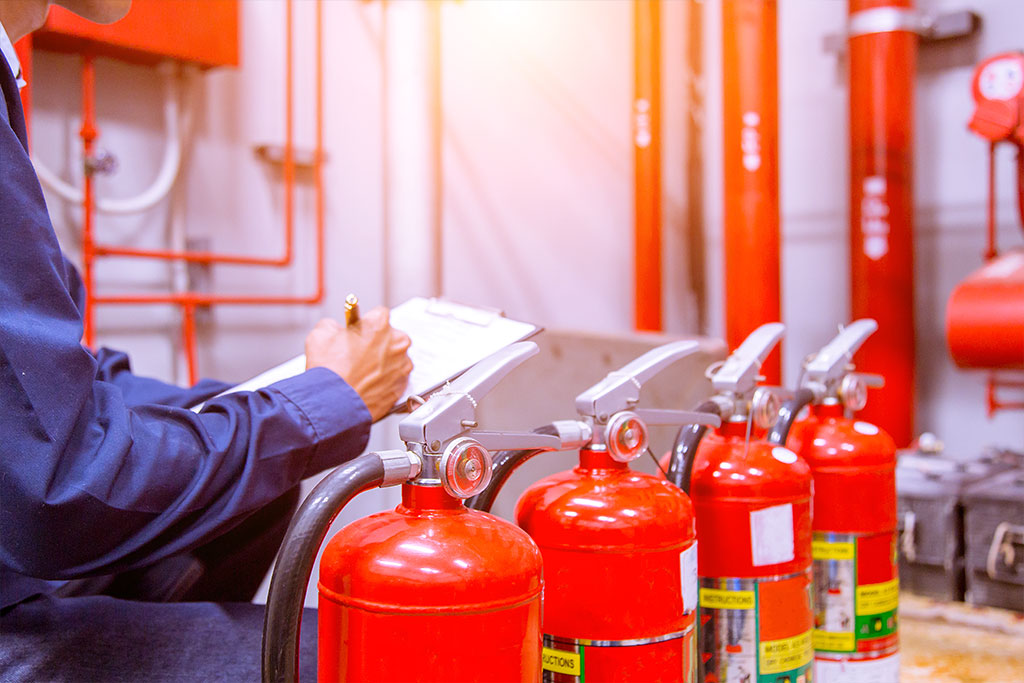Common Types of Fire System and causes in different fields
A fire system (also known as a fire protection system) is a network of devices that work together to detect, control, and extinguish fires. These systems are installed in buildings to ensure the safety of occupants and prevent damage to property. There are several types of fire systems, including fire alarms, smoke detectors, sprinkler systems, fire extinguishers, and fire suppression systems. The type of fire system used depends on the building’s size, use, and occupancy. Fire systems are designed, installed and maintained in accordance with specific regulations and codes, and are subjected to regular inspections to ensure their continued effectiveness.
Types of fires and their causes
“Extinguishing system” means a group of devices designed to provide protection from fire,
or to extinguish or detect it.
Class A fires: “Normal” fires:
They are most common to fires and occur when combustible materials such as wood, paper, fabric, trash, and light plastics ignite. These accidental fires are common in a variety of industries.
Although it is classified as a “normal” category, we do not consider this category of fire as low risk. If fuel is abundant nearby, these fires can intensify and spread rapidly. Therefore, it is best to put out the fire quickly before it spreads using water or mono ammonium phosphate.
Top Fire System for this Type is:
Class B Fires: Liquids and Gases:
Class B fires include flammable liquids and gases, especially fuels such as petroleum derivatives such as gasoline, paints, and kerosene. Other highly flammable gases such as propane and butane are common causes of Class B fires. The best way to handle these types of fires is to block out the oxygen with foam or carbon dioxide fire suppression equipment.
Top Fire System for this Type is:
Class C Fires: Electrical Fires:
Electrical fires fall under the category and are common in facilities that use heavy electrical equipment, but they can occur in a wide range of industries. For example, data centers may be an obvious danger area for Class C fires. They must have safeguards to deal with electrical fires
On construction sites potential fire hazards. Generators can cause electric power
Older buildings with poor electrical wiring or heaters also represent more potential fire concerns.
Top Fire System for this Type is:
Class D Burners: Metal Fires:
They are not as common as the other categories, but they need special attention because they can be particularly difficult to extinguish with water as this can increase fire and potentially be dangerous. Metal fires include flammable materials such as titanium, aluminum, magnesium, and potassium – all of which commonly occur in Laboratory laboratories.
Dry powder elements are the best solution for putting out this type of fire.
Top Fire System for this Type is:
Grease Fires or Cooking Fires: Class E Fires:
They are similar to Class B fires but are particularly associated with the restaurant industry. These common fires start from burning liquid cooking materials including grease, vegetable, and animal fats. This type of fire is considered one of the most dangerous types because it can spread quickly and is difficult to control.
From the foregoing, it is clear the importance of preparing for any fire hazard, regardless of the type of fire. This readiness includes three areas that must be focused on, namely:
- Equipping with an appropriate fire extinguisher.
- Commitment to regular fire safety training.
- Maintaining all necessary equipment in a state of readiness.



Leave a Reply